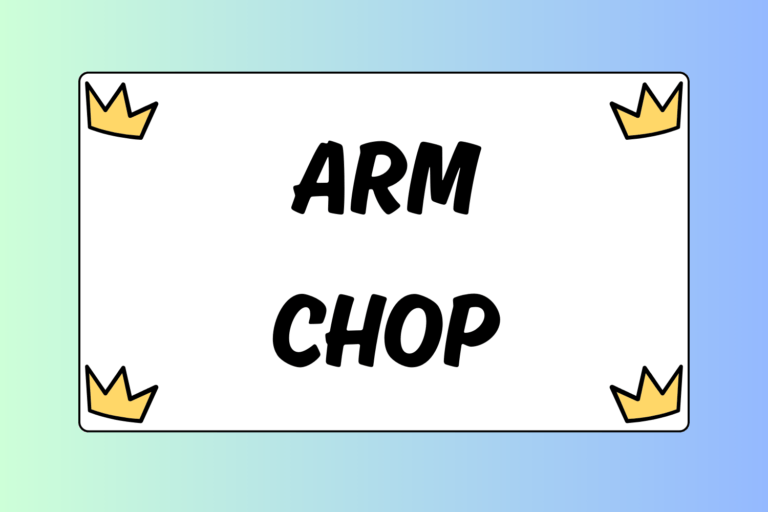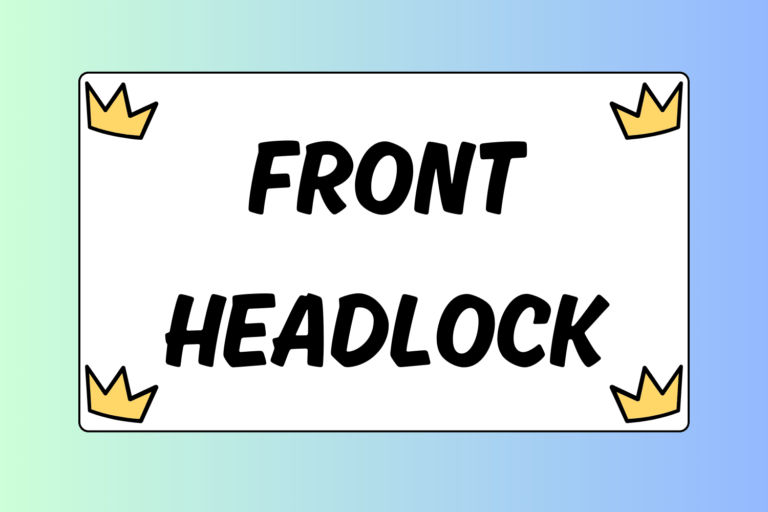If there is one pinning combination you should know, it’s the far-side cradle. Most wrestlers learn this move as beginners, but as they advance their technique, they go on and use it to win at higher levels of competition. Needless to say, when solid fundamentals are used, the far-side cradle is a powerful move. To start learning how to perform this effective technique, read on.
1. Break Your Opponent Down
Because the far-side cradle is a versatile technique, there are several ways from which you can start it. For beginning wrestlers, though, it is best to learn the move when the opponent is broken down flat. Cradling your opponent when he is already broken down lessens the chance of making a mistake and getting reversed. So, use whatever breakdown you like — just get him flat. For more information about breakdowns from the top position, check out our guide Wrestling Moves: Basic Breakdowns.
Once your opponent is broken flat, straddle one of his legs (the leg on the opposite side of his body from the arm you want to secure in the cradle). For example, if you want to secure his (far) left arm and cradle the left side of his body, straddle his right leg. Don’t forget to keep pressure on the center of his back with your chest to keep him from basing up.
2. Crossface & Secure the Arm
To gain control of your opponent’s upper body, you will need to crossface him and secure his far arm. For the purposes in this guide, the instruction below describes the use of your right arm for the crossface:
- Press the boney part of the inside of your wrist (near the thumb) across your opponent’s face, towards the far arm that you want to control. This isn’t a punch, so you can’t “windup” or pull your arm back to increase the force. However, you may give your opponent a stiff crossface by applying a steady, inward pressure as you move your hand across his face and towards the arm.
- Grip his arm, high on the triceps, with your thumb pointing up. Pull his arm in towards you to secure his upper body.
Hot Tip: Tough Crossface
Although you can technically crossface an opponent anywhere on his face, the spot that you should aim for is the space just above his upper lip and below his nose. This will cause him the most discomfort.
3. Get Off of the Body & Post
Stay on your toes and circle to the same side of his body as the leg you were straddling. For example, if you were straddling his right leg, circle to his right side to make your bodies perpendicular to each other. Make sure to keep your weight on his back with your chest as you do this.
While off of his body, post your free hand on the mat in between your opponent’s legs, next to the same-side leg as the arm you are controlling. For example, if you used your right arm for the crossface and are positioned on the right side of your opponent’s body, post your hand on the mat in between his legs and next to his left knee. The placement of your hand will make it easier to gather your opponent’s head and leg together.
4. Lift & Crunch
To begin collecting your opponent’s head and leg together, or “crunching” the cradle, you must first put your legs in position to provide the strength and leverage you need to get your hands locked.
Place your knee (that is furthest from your opponent’s head) next to his hip, and step up with the leg nearest to his head. For example, if you are positioned on the right side of your opponent’s body, place your left knee next to his right hip and step up with your right leg.
As you step up with your near leg, lift your opponent’s body up and off of the mat. Keep your hand on the mat next to his knee to prevent him from escaping. At this point, you can begin pressing your opponent’s head to his knee. The most common mistake beginning wrestlers make with the far-side cradle is trying to move their opponent’s knee towards their opponent’s head in order to get their hands locked. Your opponent’s legs are stronger than his upper body in this position, so use superior leverage to walk his head to his knee.
Use the leg you stepped up with to drive as you force your opponent’s head towards his knee. Remember that as you do this, your opponent will be trying to turn towards you to prevent you from locking your hands. Keep lifting his upper body off of the mat and driving into him. This will be constant up-and-down motion, allowing you to progressively working your opponent’s upper body to his lower body. Eventually, you will be able to lock your hands.
Hot Tip: Pinch Your Elbows
Once you lock your hands, pinch your elbows together to make the lock even tighter.
5. Lock & Reposition
Once you get your hands locked, you can begin to take your opponent to his back. But, first you must reposition your legs:
- Move the knee that you have closest to your opponent’s head to the mat next to his lower back. (This will be the knee of the leg you stepped up with to help you drive.)
- Step up with your far leg. Imagine that you are on the face of a clock and step toward two o’clock.
6. Pull Him Over your Knee
Push off of the leg you stepped up with and pull your opponent over the knee you placed in his lower back. If done correctly, you will pull him to his back and your knee will be underneath his lower back.
There are several different ways to keep your opponent secure in this position, but the most basic and effective way to do this is to place your near-knee in his hip. (This will be the same knee you took him over.) From here, keep your lock tight and pinch your elbows. Also, pull your lock towards you as you use your near-knee to push his hip. This will allow you to keep his body secure while you press his back to the mat for a pin!
Cradle the Competition
The far-side cradle is utilized at all levels of folkstyle wrestling for one reason: It works! You may also catch some freestyle wrestlers using the far-side cradle in international competition, as well. The fact of the matter is that the near-side cradle is a move that all wrestlers should know. Keep the steps in this guide in mind as you start to drill this move to perfection. Good luck!





